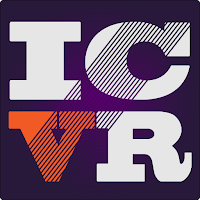ICVR 2013: Designing an effective rehabilitation simulation
This is a presentation I gave this past August at the International Conference on Virtual Rehabilitation (ICVR 2013), as part of the workshop "Designing an effective rehabilitation simulation", organized by Gerard Fluet (Rudgers University) that also had the participation of Wendy Powell (University of Portsmouth) and Qinyin Qiu (Rudgers University).
The goal of the workshop was to instruct participants on how to be able to:
- Outline the process for developing, designing and testing an effective rehabilitation simulation,
- Describe the process of shaping human movement abilities using simulated activities,
- Identify variables that need to be considered when designing a rehabilitation activity,
- Evaluate an open source virtual environment or game for conversion to a rehab activity,
- Identify the strengths and weaknesses of commercially available software platforms,
- Describe commonly used metrics to measure simulated movement performance,
- Describe key features of a rehab activity that can be used to evaluate changes in movement performance.
The workshop was very successful and we gathered many more people than we expected beforehand. The feedback was quite positive, specially from those "novices" in the virtual rehabilitation field, that really appreciated the fact that they could see explained the process - from the design principles to the field evaluation - of more "experienced" researchers. The fact that these "principles" or rather the specific know-how is not always written in papers and can be rarely found in a single place is what has motivated me to share the slides I presented.
My (rather lengthy) presentation tries to cover the scientific hypotheses in which we have based our work on rehabilitation systems; how those hypotheses can be implemented using interactive technologies and virtual reality; interface technology and accessibility issues; principles and implementation of automatic personalization of training to individual patients; findings in longitudinal studies with acute and chronic stroke patients; brain imaging validation; and a discussion on game engines. I hope it can be of use if you are working in the virtual rehabilitation field or you just want to learn more about it. In it you will also find all pointers and references to background literature and our own papers where you will be able to find further information.



Comments